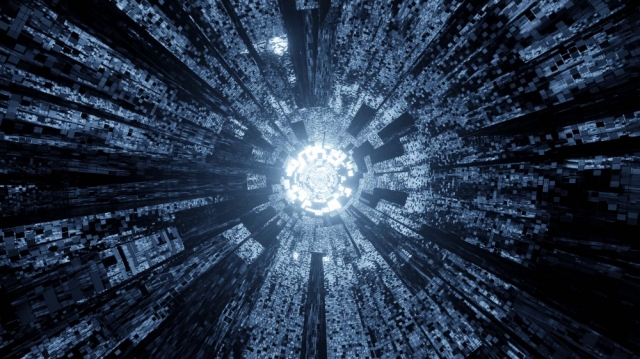Light Emitting Diodes, commonly known as LEDs, have become an integral part of modern technology, revolutionizing the way we illuminate our world. From household lighting to advanced industrial applications, LEDs have outpaced traditional lighting solutions in efficiency, versatility, and environmental impact. Over the past few years, significant innovations in LED design and applications have pushed the boundaries of what this technology can achieve. This article explores the latest developments in LED technology and its diverse applications, while also touching upon the comparison between IPS vs LED in display technologies.
The Evolution of LED Technology
The Early Days of LEDs
LED technology began in the early 20th century, but it wasn't until the 1960s that the first practical visible-spectrum LED was developed. Initially, LEDs were limited to emitting low-intensity red light, primarily used in indicator lights and displays. However, the subsequent decades saw rapid advancements in LED technology, with the development of LEDs capable of producing light across the entire visible spectrum.
Breakthroughs in Efficiency and Brightness
One of the most significant innovations in LED design has been the improvement in efficiency and brightness. Modern LEDs are capable of producing much more light per watt of electricity than their predecessors, making them far more energy-efficient than traditional incandescent and fluorescent bulbs. The introduction of high-brightness LEDs (HB-LEDs) has further expanded the potential applications of LEDs, allowing them to be used in situations where high-intensity lighting is required, such as in automotive headlights and street lighting.
Innovations in LED Design
Miniaturization and Flexibility
One of the most exciting developments in LED design is the trend toward miniaturization and flexibility. Advances in materials science have led to the creation of smaller, more efficient LEDs that can be embedded in flexible substrates. This has opened up new possibilities for LED applications, such as in wearable technology, flexible displays, and even medical devices. Flexible LED displays, in particular, are gaining popularity in the advertising and entertainment industries, where they are used to create eye-catching, dynamic visual experiences.
Smart LED Technology
The integration of smart technology with LEDs has also been a game-changer. Smart LEDs can be controlled remotely through smartphones or smart home systems, allowing users to adjust brightness, color, and even lighting schedules with ease. These smart LEDs can be integrated with other smart home devices, such as motion sensors and voice-activated assistants, to create a fully automated lighting system. Additionally, the use of smart LEDs in commercial and industrial settings has led to significant energy savings, as lights can be dimmed or turned off automatically when not needed.
The IPS vs LED Debate in Display Technology
Understanding IPS and LED Displays
When discussing innovations in LED design, it’s important to address how LEDs are used in display technology, particularly in comparison to IPS (In-Plane Switching) displays. The IPS vs LED debate often arises when consumers are choosing between different types of screens for monitors, televisions, or smartphones.
IPS displays are known for their superior color accuracy and wide viewing angles, making them ideal for graphic design, video editing, and other applications where color fidelity is crucial. On the other hand, LED displays, which use LEDs as their backlight source, offer better energy efficiency and contrast ratios. The choice between IPS vs LED often depends on the specific needs of the user, with IPS being preferred for color-critical tasks and LED for energy efficiency and brightness.
Innovations in LED-Backlit Displays
Recent innovations have blurred the lines between IPS and LED technologies. Many modern displays combine IPS panels with LED backlighting, offering the best of both worlds. These hybrid displays provide the wide viewing angles and color accuracy of IPS, along with the improved brightness and energy efficiency of LED backlighting. This combination has become increasingly popular in high-end monitors and televisions, where both performance and efficiency are highly valued.
Applications of LED Technology
Automotive Industry
The automotive industry has been one of the biggest adopters of LED technology. LEDs are now commonly used in headlights, taillights, and interior lighting due to their durability, energy efficiency, and design flexibility. The ability to create compact and bright light sources has allowed automotive designers to experiment with new shapes and lighting configurations, enhancing both the aesthetic appeal and safety of vehicles. Additionally, the use of LEDs in automotive lighting has been shown to reduce power consumption, contributing to the overall energy efficiency of modern vehicles.
Healthcare and Medicine
LEDs are also making significant strides in the healthcare and medical fields. One of the most promising applications of LED technology in medicine is in phototherapy, where LEDs are used to treat a variety of skin conditions, such as acne and psoriasis. The precise control over light wavelength and intensity that LEDs offer makes them ideal for these applications. Moreover, LEDs are being used in surgical lighting, where their bright, focused light and low heat emission are crucial in creating optimal operating conditions.
Agriculture and Horticulture
In agriculture and horticulture, LEDs are being used to optimize plant growth. LED grow lights can be tailored to emit specific wavelengths of light that are most beneficial for photosynthesis, leading to faster growth and higher yields. The energy efficiency of LEDs also makes them a cost-effective solution for indoor farming and vertical agriculture, where maximizing light exposure while minimizing energy consumption is key.
The Future of LED Technology
Continued Innovation and Integration
As LED technology continues to evolve, we can expect to see even more innovative applications and integrations. One area of particular interest is the development of MicroLEDs, which are even smaller than traditional LEDs and offer higher brightness and efficiency. These MicroLEDs have the potential to revolutionize display technology, providing better resolution and color accuracy than current OLED and LED displays.
The IPS vs LED comparison will likely continue to evolve as well, especially as manufacturers develop new ways to combine the strengths of both technologies. As the line between IPS and LED becomes increasingly blurred, consumers may find it easier to enjoy the benefits of both without having to choose between them.
Conclusion
The innovations in LED design and applications have fundamentally changed the way we use light in our daily lives. From energy-efficient household lighting to advanced medical treatments and cutting-edge display technologies, LEDs are at the forefront of a technological revolution. As the debate between IPS vs LED continues, it’s clear that LED technology will remain a critical component of future advancements, driving innovation across a wide range of industries. The future of LEDs is bright, flexible, and full of possibilities, and it’s exciting to imagine where this technology will take us next.






